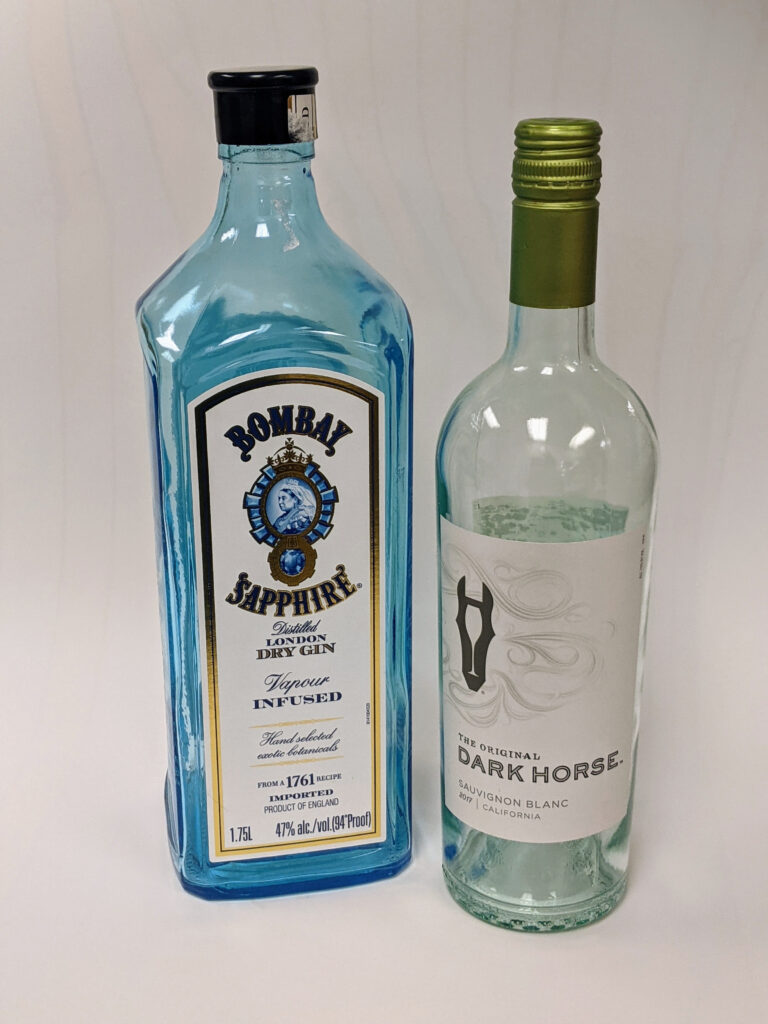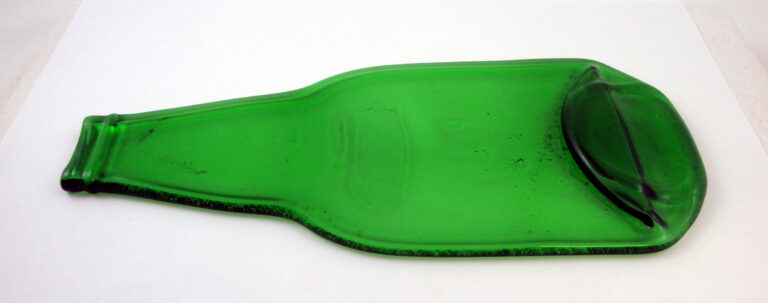Slumping Glass Bottles
Slumping wine and beer bottles in a kiln
is one way to learn the basics without having to buy special glass.

Slumping bottles in a kiln is not difficult. It does, however, require a knowledge of basic kiln-forming principles and an understanding of both thermal shock, annealing, and devitrification. If you are not familiar with these terms, then spend a few moments reading through the Tutorial section of this website.
The basic process for slumping a bottle in a kiln is as follows:
1. Clean the bottle thoroughly and allow it to dry. Some people also apply a devit spray to the bottle to help prevent devitrification. This is recommended for most blue and amber bottles and can be helpful for other colors as well.
2. Protect your kiln shelf with kiln wash or thinfire shelf paper.
3. Lay the bottle in the kiln on it side. Bottles can roll during the firing, so try to place the bottle so it sits still, rather than rolls.
4. Fire the kiln to 1100F and hold for 10 minutes. The rate of temperature increase should be around 500 degrees per hour. Some people fire as fast as 800 degrees per hour, but be aware that the faster you fire the more likely the bottle is to crack from thermal shock. The purpose of the 10 minute soak is to allow the temperature of the glass to equalize and to all reach 1100F.
5. Fire the kiln at 250 degrees per hour to 1450F. Hold the temperature constant at 1450F until the bottle has slumped to the degree you want. Usually this takes around 10 minutes.
6. Cool the kiln to 1000F.
7. Anneal. Some people accomplish this by simply letting the closed kiln cool naturally. This approach will work if your kiln cools slowly enough through the annealing range (for bottles, roughly 1050F to 850F). You would want to cool at a rate of 150 degrees per hour or slower. If your kiln has a controller, a proper anneal soak is highly recommended: soak at 1000F for 60 minutes, then cool at a rate of 100 degrees F per hour to 750F.
8. Cool to room temperature. Most kilns will cool at a slow enough rate to avoid thermal shocking the bottles by cooling too fast, so you can usually turn the kiln off at 750F.
If necessary, this suggested firing schedule can be modified. Some possible modifications are:
1. Slump at a lower temperature (or hold for less time) if the bottles are flattened more than you like. Increase the temperature or the hold time to flatten the bottle further.
2. Slow down the heating or cooling rate if the bottles crack while in the kiln. If they crack soon after emerging, then the problem is most like improper annealing.
3. If kiln wash sticks to your bottle, then try slumping to a lower temperature and soaking longer. In general, the lower the temperature the less likely you are to have problems.
4. Larger and thicker than normal bottles will require a slower firing rate on the way up and a longer annealing hold on the way down.
You can learn more about slumping bottles, or get more advanced questions answered, on the Warm Glass Bulletin board.


